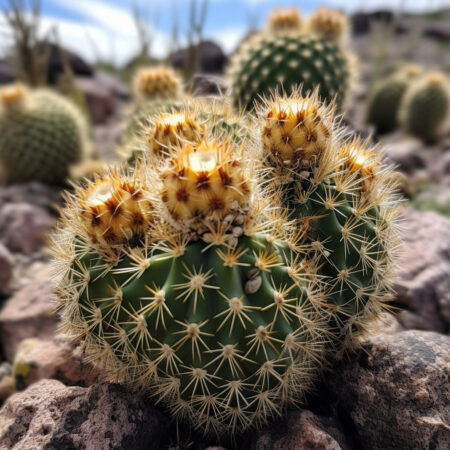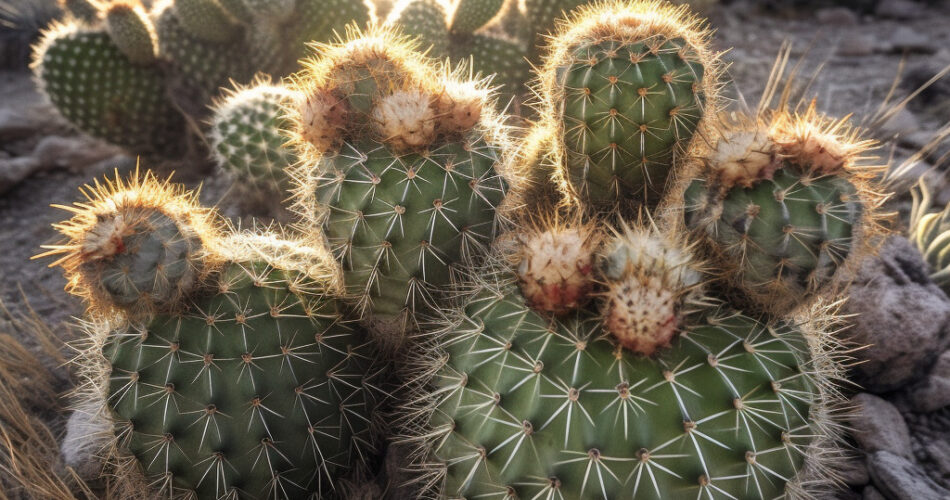Key Takeaways:
- Cacti play a unique and crucial role in ecosystems and serve as ecosystem engineers.
- Threats to cactus populations include habitat loss, invasive species, overgrazing, and climate change.
- Cacti have economic value in traditional medicine and horticulture.
- Advocacy and public engagement are vital for raising awareness and mobilizing action for cactus conservation.
- Legislation and policy frameworks are critical for protecting cacti and their habitats.
- International agreements and conventions, along with national legal frameworks, contribute to cacti protection.
- Government agencies collaborate with NGOs and communities to enforce conservation measures.
- Success stories demonstrate the effectiveness of habitat restoration, community-led initiatives, and collaboration with indigenous communities in cactus conservation.
1. The Importance of Cactus Conservation
Cacti are remarkable plants that play a unique and crucial role in the ecosystems they inhabit. These distinctive succulents have adapted to survive in arid and harsh environments, making them vital components of desert and dryland ecosystems around the world.
The Unique Ecological Role of Cacti
Cacti serve as ecosystem engineers by providing habitat and food for a diverse range of organisms. Their spines and thick waxy coatings help reduce water loss and protect them from herbivores, while their flowers attract pollinators such as bats, bees, and birds. Many species of cacti also have shallow root systems that help prevent erosion and stabilize soil in arid regions.
Furthermore, cacti are integral to the water cycle in desert ecosystems. Their ability to store water enables them to survive during long drought periods, and when it does rain, cacti act as natural sponges, absorbing and retaining water, which gradually releases into the soil, supporting other plants and animals in the area.
Threats to Cactus Populations
Despite their ecological importance, cacti face numerous threats that put their survival at risk. Habitat loss, primarily due to urbanization, agricultural expansion, and the illegal collection of wild cacti for trade, is a significant concern. Fragmentation of habitats also poses a threat, as it limits gene flow and disrupts ecological processes.
Invasive plant species, overgrazing by livestock, and climate change-induced extremes, such as wildfires and prolonged droughts, further compound the challenges faced by cactus populations. Additionally, the depletion of underground water resources, often caused by unsustainable human activities, directly impacts cacti that rely on these water sources.
The Economic Benefits of Cactus Preservation
Beyond their ecological importance, cacti also hold economic value. Many cacti species are used in traditional medicine, providing essential remedies for various ailments. In addition, cacti have significant horticultural value, with numerous species prized for their unique and ornamental characteristics.
The cultivation and trade of cacti have created economic opportunities for local communities, contributing to their livelihoods and regional economies. By preserving cacti and their habitats, we can ensure the continuity of these economic benefits while promoting sustainable practices that protect the environment.
2. Advocacy for Cactus Conservation
Advocacy plays a crucial role in raising awareness about the importance of cactus conservation and mobilizing collective action to protect these remarkable plants.
The Role of Environmental NGOs in Cactus Preservation
Environmental non-governmental organizations (NGOs) are at the forefront of cactus preservation efforts. These organizations work tirelessly to research and monitor cactus populations, advocate for their protection through policy and legislation, and engage in habitat restoration and conservation projects.
NGOs also collaborate with local communities, scientists, and governments to develop sustainable conservation strategies that balance the needs of communities and ecosystems. By leveraging their expertise and networks, environmental NGOs amplify the voices of those advocating for cactus conservation and drive meaningful change.
Engaging the Public in Cactus Conservation
Engaging the public in cactus conservation is essential for building a broader movement dedicated to the long-term preservation of these plants. Public education and outreach initiatives help raise awareness about the ecological value of cacti and the threats they face.
Through educational programs in schools, community events, and online platforms, individuals can learn about the importance of cactus conservation and the actions they can take to support it. Empowering the public with knowledge fosters a sense of responsibility and encourages individuals to make sustainable choices that protect cacti and their habitats.
Raising Awareness through Cactus Conservation Campaigns
Cactus conservation campaigns serve as powerful tools for raising awareness and rallying support for these plants. By leveraging social media, traditional media outlets, and organizing events, these campaigns amplify the message of cactus conservation to a wide audience.
Effective campaigns highlight the ecological, economic, and cultural significance of cacti, while also shedding light on the threats they face. Through storytelling, visual media, and compelling narratives, these campaigns capture the attention and interest of the public, generating momentum for conservation efforts.

3. Legislation and Policy for Cactus Conservation
Strong legislation and policy frameworks are critical for the effective conservation of cacti. They provide the legal basis for protecting cacti and their habitats, outline regulations for trade and collection, and establish penalties for illegal activities.
International Agreements and Conventions for Cactus Protection
Several international agreements and conventions contribute to the protection of cacti. The Convention on International Trade in Endangered Species of Wild Fauna and Flora (CITES) regulates the international trade and collection of endangered cactus species, ensuring their sustainable use and preventing exploitation.
Furthermore, regional agreements and initiatives, such as the Global Strategy for Plant Conservation and the North American Plant Conservation Initiative, promote collaboration among countries to conserve plant biodiversity, including cacti.
National Legal Frameworks for Cactus Preservation
Many countries have enacted legislation that specifically addresses cactus conservation. These laws vary in scope and focus, but they commonly include measures to protect cacti in their natural habitats, regulate the collection and trade of cactus species, and establish protected areas for their conservation.
Effective national legal frameworks also involve the participation of indigenous communities and local stakeholders in the decision-making processes, ensuring that their traditional knowledge and perspectives are considered and respected.
The Role of Government Agencies in Cactus Conservation
Government agencies play a pivotal role in the implementation and enforcement of cactus conservation measures. They are responsible for monitoring cactus populations, conducting research, and developing management plans that prioritize the conservation of these plants.
Government agencies also collaborate with NGOs, scientists, and local communities to implement habitat restoration projects, conduct public awareness campaigns, and enforce regulations. By coordinating efforts and leveraging their resources, government agencies can effectively protect cacti and promote their long-term survival.
4. Success Stories in Cactus Conservation
Despite the challenges faced by cacti, numerous success stories demonstrate the positive outcomes that can be achieved through dedicated conservation efforts.
Restoration Efforts for Threatened Cactus Species
Conservation organizations and local communities have successfully restored populations of threatened cactus species through habitat restoration projects and reintroduction programs. By rehabilitating degraded habitats and implementing sustainable land management practices, these initiatives have created suitable conditions for cacti to thrive.
Community-led Conservation Initiatives for Cacti
Local communities have played a crucial role in the conservation of cacti by establishing community-managed protected areas and implementing sustainable harvesting practices. These initiatives not only protect cacti and their habitats but also empower communities to manage their natural resources in a sustainable and equitable manner.
Collaborative Conservation Projects with Indigenous Communities
Collaborative projects with indigenous communities have proven successful in conserving cacti and respecting traditional knowledge and practices. By combining traditional ecological knowledge with scientific expertise, these projects ensure a holistic approach to cactus conservation, considering both the biological and cultural aspects of these plants.
These success stories highlight the positive impact that concerted conservation efforts can have on cactus populations. By learning from these examples and implementing similar strategies, we can further strengthen global cactus conservation and secure a future for these remarkable plants.
FAQ
Question: What is the ecological role of cacti?
Answer: Cacti serve as ecosystem engineers by providing habitat and food for a diverse range of organisms. Their spines and thick waxy coatings help reduce water loss and protect them from herbivores, while their flowers attract pollinators such as bats, bees, and birds. Many species of cacti also have shallow root systems that help prevent erosion and stabilize soil in arid regions.
Question: What are the threats to cactus populations?
Answer: Threats to cactus populations include habitat loss, primarily due to urbanization, agricultural expansion, and the illegal collection of wild cacti for trade. Fragmentation of habitats also poses a threat. Invasive plant species, overgrazing by livestock, and climate change-induced extremes further compound the challenges faced by cactus populations. Additionally, the depletion of underground water resources directly impacts cacti that rely on these water sources.
Question: What are the economic benefits of cactus preservation?
Answer: Cacti have economic value in traditional medicine, providing essential remedies for various ailments. In addition, cacti have significant horticultural value, with numerous species prized for their unique and ornamental characteristics. The cultivation and trade of cacti have created economic opportunities for local communities, contributing to their livelihoods and regional economies.
Question: How does advocacy contribute to cactus conservation?
Answer: Advocacy plays a crucial role in raising awareness about the importance of cactus conservation and mobilizing collective action to protect these plants. Environmental non-governmental organizations (NGOs) advocate for their protection through policy and legislation, engage in habitat restoration and conservation projects, and collaborate with local communities, scientists, and governments to develop sustainable conservation strategies.
Question: How can the public be engaged in cactus conservation?
Answer: Engaging the public in cactus conservation is essential for building a broader movement dedicated to the long-term preservation of these plants. Public education and outreach initiatives help raise awareness about the ecological value of cacti and the threats they face. Additionally, cactus conservation campaigns serve as powerful tools for raising awareness and rallying support for these plants.
Question: What role do legislation and policy play in cactus conservation?
Answer: Legislation and policy frameworks provide the legal basis for protecting cacti and their habitats, regulate the collection and trade of cactus species, and establish penalties for illegal activities. International agreements and conventions, such as CITES, contribute to cactus protection, while national legal frameworks vary in scope but commonly include measures to protect cacti in their natural habitats and establish protected areas for their conservation.
Question: What is the role of government agencies in cactus conservation?
Answer: Government agencies are responsible for monitoring cactus populations, conducting research, and developing management plans that prioritize cactus conservation. They collaborate with NGOs, scientists, and local communities to implement habitat restoration projects, conduct public awareness campaigns, and enforce regulations.
Question: Can you provide examples of successful cactus conservation efforts?
Answer: Successful conservation efforts include habitat restoration projects and reintroduction programs for threatened cactus species, community-led initiatives for cacti conservation, and collaborative projects with indigenous communities that combine traditional ecological knowledge with scientific expertise. These examples demonstrate the positive impact that concerted conservation efforts can have on cactus populations.




Comments